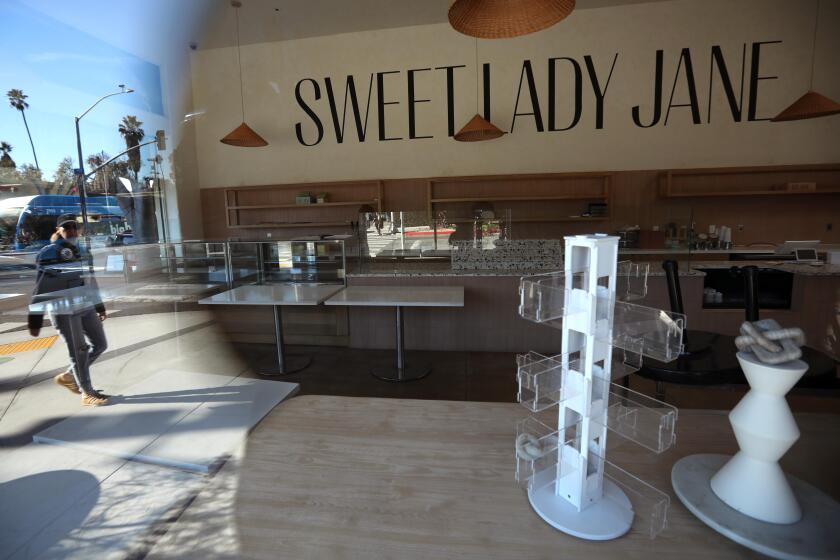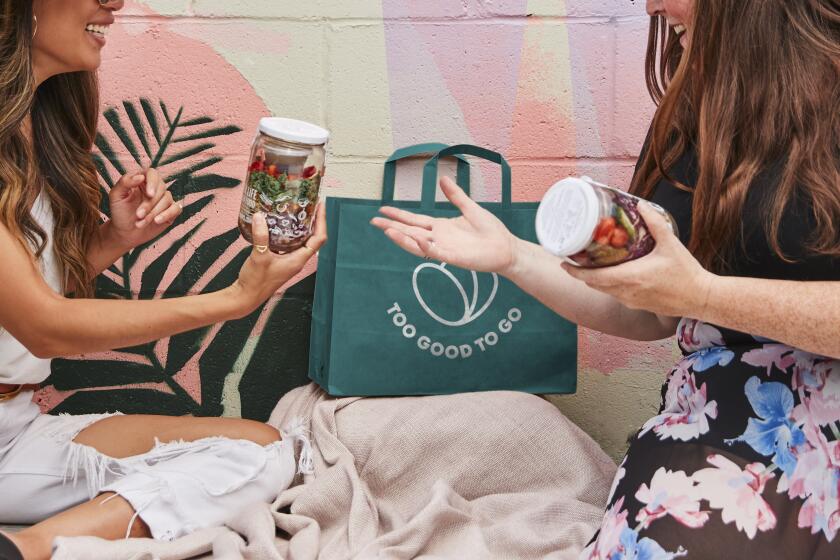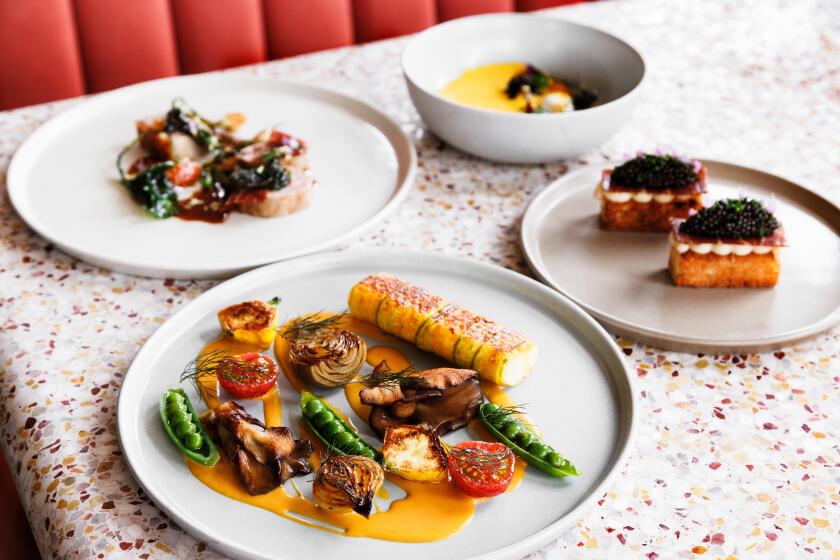How real is ‘The Menu’s’ chefs versus customers divide?
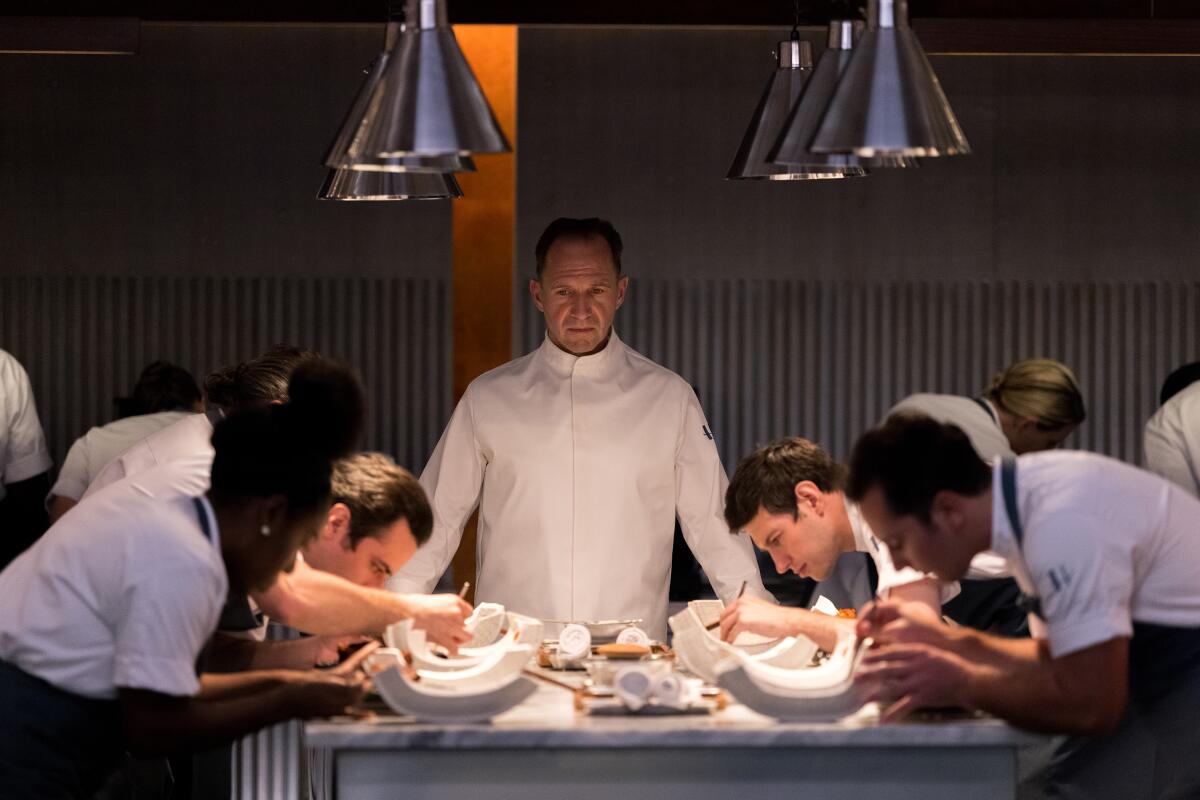
I’m Laurie Ochoa, general manager of L.A. Times Food, with this week’s Tasting Notes.
Us versus them?

Years ago when I worked at Gourmet magazine, a colleague told me about an odd thing that happened when she ate with her husband and six friends at a three-star restaurant in France. After happily enjoying the celebrated chef’s tasting menu and expecting to receive the bill after the final dessert course, they instead were served the same amuse-bouche that began their meal. This was followed by the identical course that hours earlier had followed the opening bite. Why did the meal seem to be starting all over again? When they asked if there was some mistake, they were told that the chef thought they weren’t paying enough attention to his food the first time around — this “second service” would give them another chance to appreciate his cuisine. It was a vaguely sinister and darkly comic move that embodied the self-seriousness that many ascribe to the world of haute cuisine.
I thought about this story when I saw the new horror film “The Menu,” starring Ralph Fiennes as a world-famous chef who exacts revenge on the worst of his customers and on the entire system of fine dining. I won’t reveal details of what happens in the movie, but I can say that as someone who has been lucky to have eaten at more than my share of Michelin-starred and “world’s best” restaurants, I squirmed with recognition more than once at the parody of foodie-ism gone amok. Would I be sitting in the seat of the famed restaurant critic’s editor played by Paul Adelstein? Or perhaps at the table reserved for Nicholas Hoult’s character, an overeager superfan who takes photos of every course? Certainly, I have been most seduced by chefs who are not only great cooks but storytellers as well. In “The Menu,” this storytelling aspect of fine dining — the sourcing of the ingredients, the cultural references, the personal motivations — is taken to evil extremes.
What is most striking about the film, however, is the us-versus-them divide that the film insists exists between the chefs and their customers. Givers versus takers. As detailed in the film’s trailer, Fiennes’ chef Julian Slowik, who has carefully curated the guest list, asks the meal’s last-minute, unexpected diner (Anya Taylor-Joy), “I have to know if you’re with us or with them.” After talking with many chefs over the years, I can say that it’s not uncommon for some, especially those who bootstrapped their way to the top, to feel a gap between themselves and their most entitled customers. It’s a classic artist’s dilemma.
In her review of the film, Katie Walsh writes, “‘The Menu’ is ... about the consumption of art, as well as the forces the artist finds himself subjected to while attempting to create. Chef Slowik has sold his soul for success, subjecting himself to the whims of the big money investors, the critics, the celebrities, his mindless consumers, and worst of all, his fanboys.”
Enjoying this newsletter? Consider subscribing to the Los Angeles Times
Your support helps us deliver the news that matters most. Become a subscriber.
Three-star chef Dominique Crenn, who was the film’s chief technical consultant, told Times reporter Stephanie Breijo that on some level she identified with chef Slowik. “She could understand the artistry and determination of the embattled Slowik, as well as his years of pain in an industry rife with abuse, critique and perfectionism at any cost,” Breijo writes in her story about the creation of the restaurant and food seen in “The Menu.”
Crenn tells Breijo that she hopes moviegoers will “think differently about the people that work in the restaurant and maybe [bring] more kindness and thoughtfulness and consciousness.”
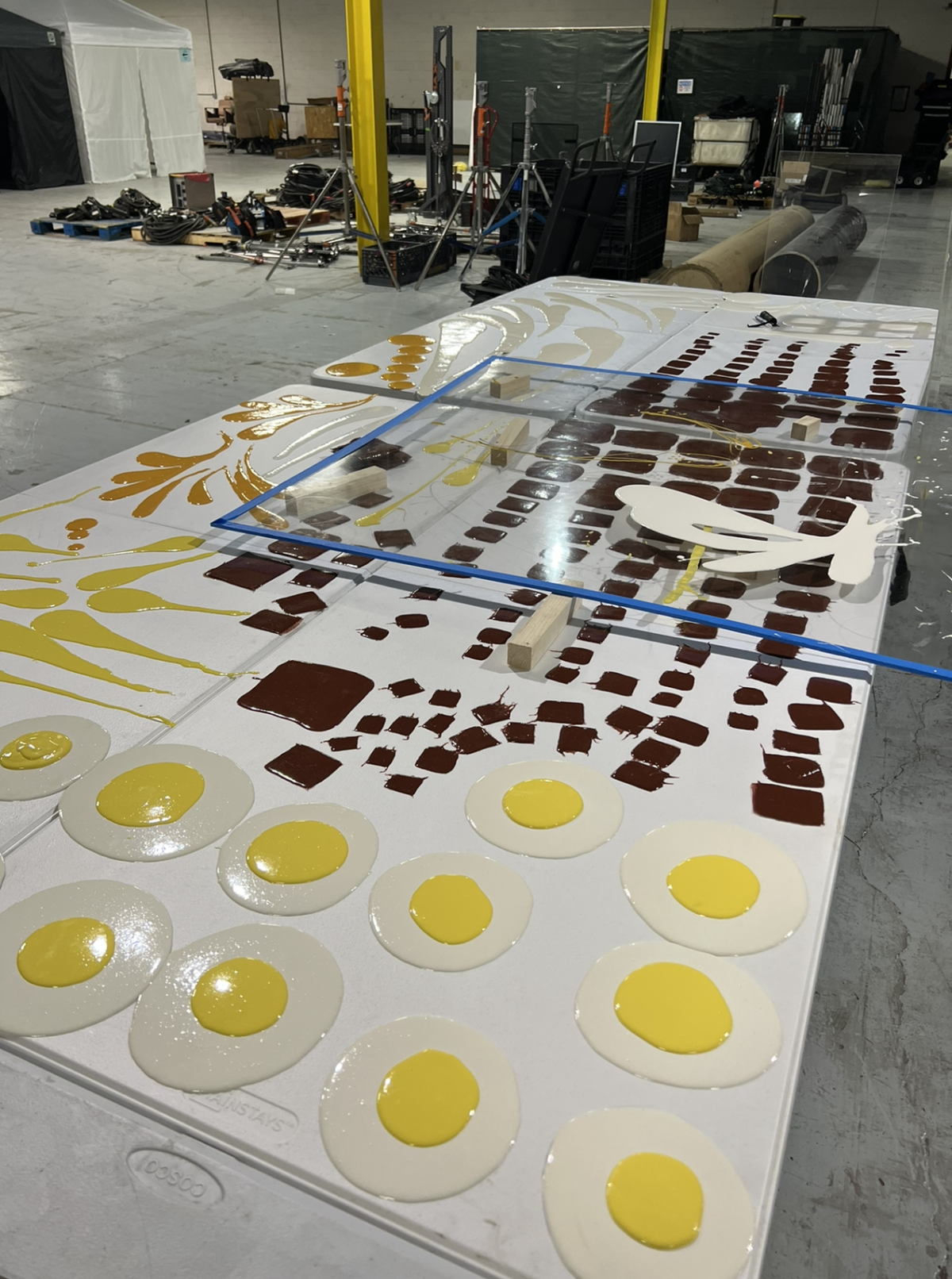
We’ve seen in the post-pandemic staff shortages at restaurants that there is a huge cost in the physical and psychological demands on those who make and serve our food. Consider that Starbucks workers went on strike this week at more than 100 locations over better pay and more consistent scheduling. At the same time, there has also been a flowering in creativity at restaurants as we emerge from the COVID era — as well as plenty of pricey tasting menus. Is it too much, as “The Menu” suggests? I’ve asked myself that at times during a meal that goes on a few courses too long or that can cost hundreds of dollars for two. And yet I wouldn’t want to sacrifice the artistry of our best chefs for a world of sensible food.
What I love about dining in the world’s most ambitious restaurants is the feeling that as customers and chefs we are going on an adventure together, one infused with generosity, fun and an openness to new experiences.
Last month I had the chance to eat in Paris at the Michelin one-starred restaurant Comice, owned by husband and wife Noam Gedalof, who is the chef, and Etheliya Hananova, the sommelier. At the beginning of the meal Hananova addressed the room, not with Julian Slowik-like sternness, but with openness and a simple plea that felt in sync with the spirit of our greatest restaurants: “I want to hear laughter,” she said. Rather than hushed tones and reverence, she wanted us to enjoy the food, yes, but also each other. Unlike the Paris chef who replayed his menu all those years ago, she and her husband would never reprimand customers for not paying enough attention to their cuisine. And you know what? The food was some of the best I’ve ever eaten.
Eat your way across L.A.
Get our weekly Tasting Notes newsletter for reviews, news and more.
You may occasionally receive promotional content from the Los Angeles Times.
Poncho’s Tlayudas’ call for help
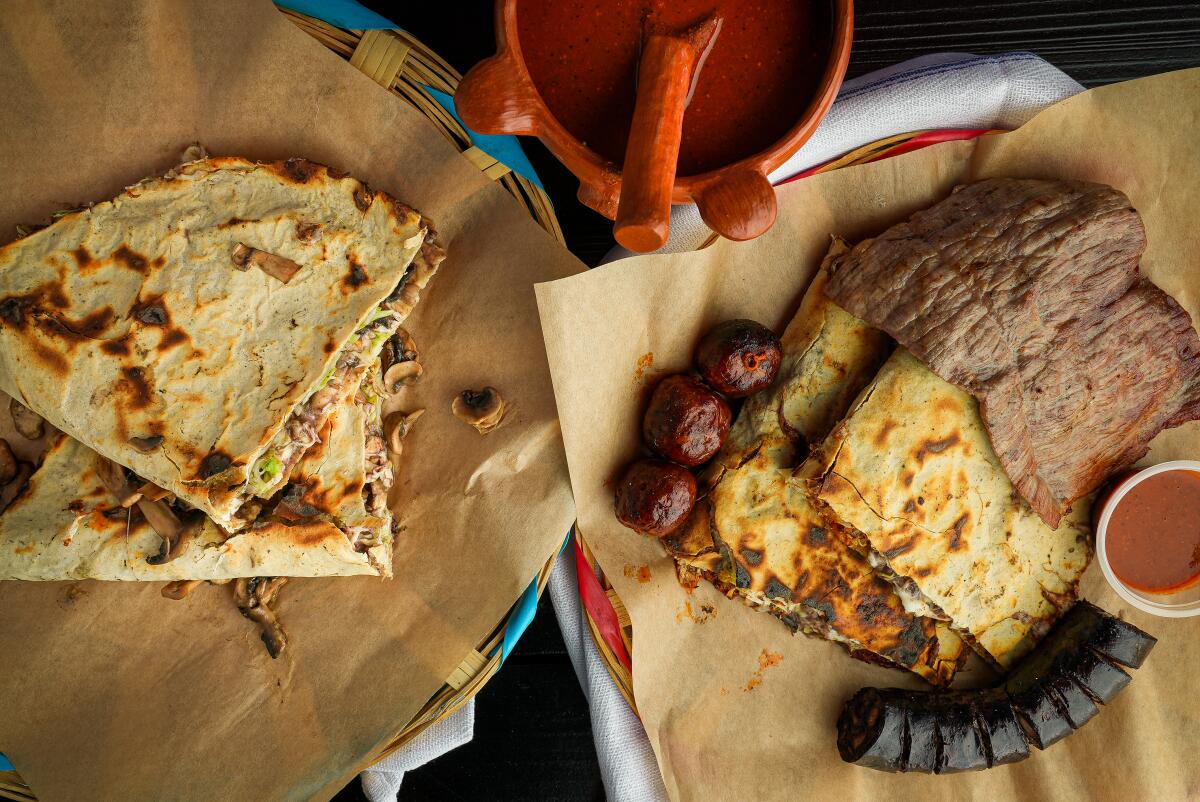
“We all have places we take people to say, ‘This is the Los Angeles I love,’” wrote Times critic Bill Addison in his review of Poncho’s Tlayudas. “A few of mine include Mariscos Jalisco for tacos dorados de camarón, République for pastries and Ototo for sake and fried snacks. A tlayuda con tres carnes at Poncho’s ... is on the short list too.” But now the beloved pop-up is in need of help after thieves stole equipment crucial to its operation, including a two-burner gas grill, commercial electric drum fans and much more. A GoFundMe page has been set up to help Alfonso “Poncho” Martinez get his operation running again.
Hot cheese

In her weekly report of what she’s been eating, food columnist Jenn Harris reminded me how much I love Mercado Buenos Aires in Van Nuys. And she shares a secret from owner Paul Rodriguez about how the restaurant prepares its provoleta, or grilled cheese, for the hot skillet. Read her column to find out what they do.
Pie deadline
Thanksgiving is fast approaching and if you’ve just decided you’d rather order your pies instead of baking them yourself, you’re in luck. Some of our best bakeries are still taking orders, but you’ll need to act fast. Stephanie Breijo, Jenn Harris, Lucas Kwan Peterson and Betty Hallock have tips on some of the best.
101 best restaurants in L.A. party
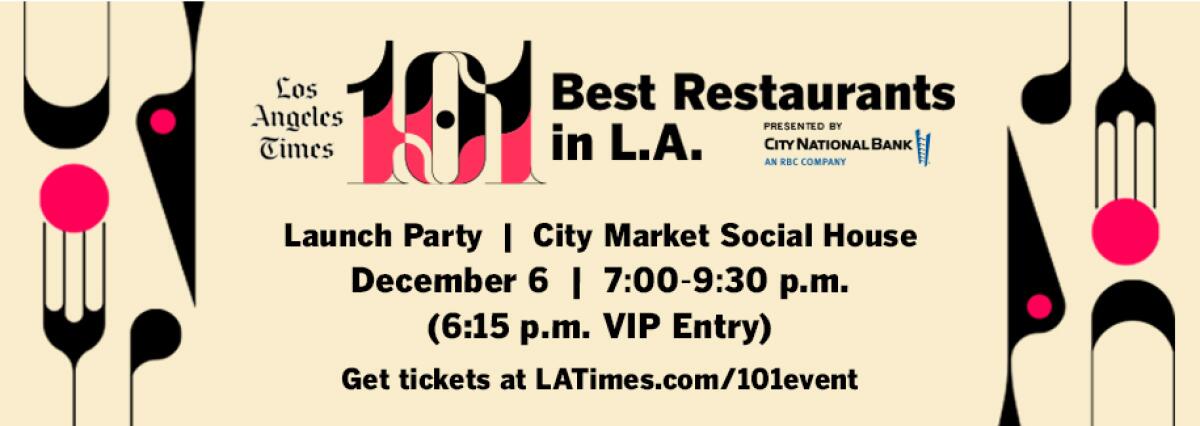
Times critic Bill Addison is in the final stages of preparing his list of the 101 best restaurants in Los Angeles. All will be revealed at the party we’re having Dec. 6 at City Market Social House in downtown L.A., and you’re invited to join us. Find out everything you need to know about tickets here.
Eat your way across L.A.
Get our weekly Tasting Notes newsletter for reviews, news and more.
You may occasionally receive promotional content from the Los Angeles Times.

